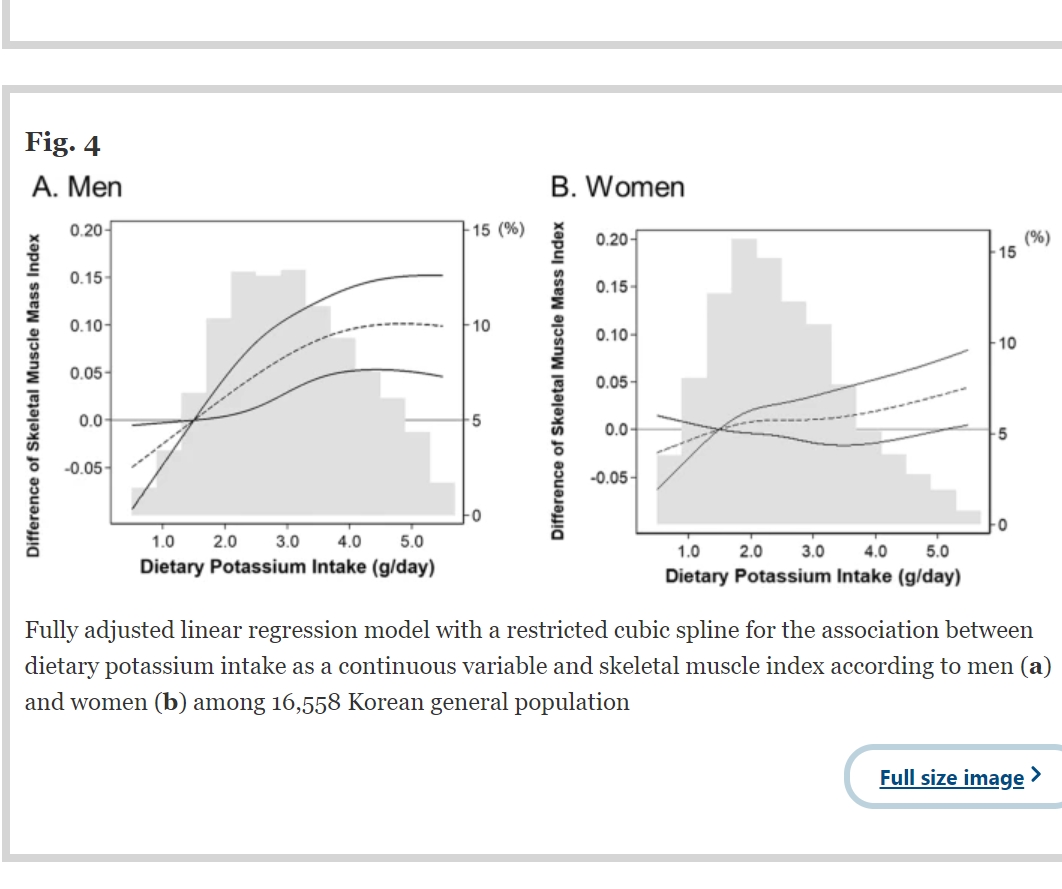Potassium intake, skeletal muscle mass, and effect modification by sex: data from the 2008–2011 KNHANES
Yu-Ji Lee, Nutrition Journal volume 19, Article number: 93 (2020)
Background
A loss of muscle mass may be influenced by multiple factors. Insulin sensitivity and metabolic acidosis are associated with muscle wasting and may be improved with potassium intake. This study evaluated the association between dietary potassium intake and skeletal muscle mass.
Methods
We performed a cross-sectional study with data obtained from the Korean National Health and Nutrition Examination Survey (KNHANES) (2008–2011). Participant’s daily food intake was assessed using a 24-h recall method. Appendicular skeletal muscle mass (ASM) was calculated as the sum of muscle mass in both arms and legs, measured using dual energy X-ray absorptiometry. The skeletal muscle index (SMI) was calculated as ASM divided by height2 (kg/m2). Low muscle mass was defined as a SMI < 7.0 kg/m2 for men and < 5.4 kg/m2 for women.
Results
Data from 16,558 participants (age ≥ 19 years) were analyzed. Participants were categorized into quintiles according to their potassium intake. Sex-specific differences were found in the association between potassium intake and muscle mass (PInteraction < 0.001). In men, higher potassium intake was associated with lower odds for low muscle mass; the fully adjusted odds ratios (95% confidence intervals) were 0.78 (0.60–1.03), 0.71 (0.54–0.93), 0.68 (0.51–0.90), and 0.71 (0.51–0.98) for the top four quintiles (referenced against the lowest quintile), respectively. However, this association was attenuated in women after adjusting for total energy intake. Higher potassium intakes were also associated with a greater SMI (skeletal muscle mass index).
Conclusions
Higher dietary potassium intake decreased the odds of low muscle mass in men but not in women.














